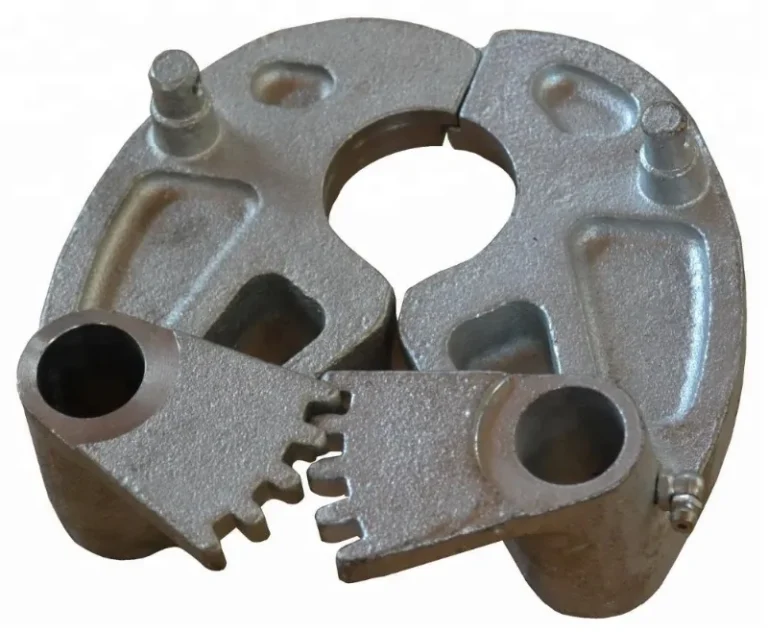
Heavy gear like bulldozers, excavators, and mining trucks works in tough spots. Gearbox and axle housings are key parts that keep them running. They take a lot of abuse daily. Their strength affects how well the machine works, stays safe, and keeps repair costs low. This piece explores what makes these castings strong, how they’re made, and why picking a good supplier is a big deal.
Gearbox and Axle Housings: The Backbone of Heavy Equipment
Gearbox and axle housings do more than hold gears and shafts. They move power from the engine to wheels or tracks. This keeps the machine steady under heavy loads. They also hold everything in place, even on rough ground or during hard jobs. A weak housing can mess up alignment, wear parts out fast, or break completely. Nobody wants a 50 ton machine stuck due to a busted casting.
Being tough is a must. Heavy gear faces high force, sudden jolts, and rough places like muddy sites or icy quarries. A strong casting cuts downtime, lowers repair bills, and keeps workers safe. Going cheap here is like building a house on sand. It’s a bad idea. Baoqi, a foundry with over ten years in casting, supplies gearbox and axle housing parts to global makers who need parts that last in extreme conditions.
What Makes a Casting Durable?
Material Selection and Alloy Composition
Picking the right stuff is the first step to a tough casting. Cast iron, like gray or ductile, is popular for its strength and ability to dampen shakes. Carbon steel is sturdy for rough jobs. Alloy steels, mixed with things like chromium or molybdenum, resist wear and tear better. Each has pros and cons. Cast iron costs less but weighs more. Alloy steel costs more but handles heavy stress well. The best choice depends on the machine’s job and where it works.
Heat Treatment and Microstructure Control
Heat treatment is where the real strength comes in. Processes like quenching and tempering tweak the metal’s inner structure. This balances toughness and hardness. Too brittle, and it cracks when hit. Too soft, and it wears out quick. Careful cooling and exact heat levels make parts that can take a beating. It’s like baking a cake, mess up the timing, and it flops. Foundries that get this right make parts that last way longer.
Quality Control in Foundry Production
Even great materials and heat treatment fail without strict checks. Tests like X ray or ultrasonic testing (UT) spot hidden flaws like holes or bits of junk inside. Hardness tests check if the surface is strong enough. These steps aren’t just paperwork. They make sure every casting can handle real world punishment. One missed flaw can cause a breakdown costing thousands. Top foundries sweat the small stuff.

Casting Processes for Gearbox and Axle Components
Sand Casting vs. Precision Casting
Two main ways make these parts: sand casting and precision casting. Sand casting is the go to, cheap, flexible, and good for big, tricky shapes like axle housings. It uses sand molds, which are fast to make but less exact. Precision casting, like investment casting, gives tighter fits and smoother surfaces. But it costs more and works best for smaller parts. Here’s how they stack up:
| Aspect | Sand Casting | Precision Casting |
|---|---|---|
| Cost | Lower | Higher |
| Tolerances | Moderate (±0.5-2 mm) | Tight (±0.1-0.5 mm) |
| Surface Finish | Rougher | Smoother |
| Best For | Large, heavy components | Smaller, intricate parts |
| Production Speed | Faster for low volumes | Slower due to mold complexity |
Both methods have their uses. A gearbox housing might use sand casting for its size, while precision casting fits smaller, detailed gear parts.
Machining and Dimensional Accuracy
Casting is just the start. Machining makes sure the housing fits just right. CNC machines trim extra material, drill exact holes, and make flat surfaces. Super tight fits, sometimes down to a few microns, ensure gears work smoothly and axles line up right. Bad machining causes shakes, quick wear, or even total breakdowns. It’s slow, careful work, but it’s what makes a part fit perfectly instead of causing trouble.
Baoqi’s foundries use automated molding lines and CNC machining centers to ensure consistent dimensional accuracy for heavy duty gearbox and axle housings.
Design and Structural Considerations
Stress Distribution and Wall Thickness
Good design makes a casting last longer. Engineers use tools like finite element analysis (FEA) to map where stress hits hardest. They make walls thicker where loads are heavy but thinner elsewhere to save weight. Too thick, and the part’s heavy and costly. Too thin, and it cracks. It’s a tricky balance. Adding ribs or curves can steer stress away, stopping cracks before they start. Smart design doesn’t just make a part stronger, it makes it last.
Surface Finishing and Corrosion Protection
A casting’s surface gets hammered by dirt, water, and chemicals. Sandblasting smooths rough spots, making it resist wear better. Coatings like paint or zinc plating block rust, especially in wet or salty places. Some even use powder coating for extra toughness. These steps aren’t flashy, but they’re vital. A rusty axle housing isn’t just ugly, it’s a problem waiting to happen.
Balancing Cost, Performance, and Longevity
The True Value of a Durable Casting
Cheap parts might look tempting, but they cost more in the long run. A tough gearbox or axle housing may cost more upfront. But it saves cash over time. Fewer breakdowns mean less downtime, smaller repair bills, and happier workers. The cost over a part’s life matters more than its sticker price. A part lasting ten years instead of five can slash total costs a ton. It’s not just about the part, it’s about keeping the whole machine going.
Choosing the Right Supplier
Not every foundry is the same. Look for ones with years of know how, they’ve seen it all. Check their quality setup: ISO certifications, in house tests, and tracking systems are must haves. Good support is key too, can they help tweak designs or fix problems? A supplier who’s just a middleman won’t do. Pick one that really gets heavy equipment.
With four specialized foundries and strong material engineering expertise, Baoqi delivers cost effective yet durable castings, helping global OEMs maintain long term reliability in their heavy equipment fleets.
Final Thoughts
Gearbox and axle housing castings are the heart of heavy equipment. Their toughness comes from smart material picks, careful casting methods, good design, and strict quality checks. Cutting corners here risks safety, uptime, and money. Picking a solid supplier isn’t just about price, it’s about getting parts that keep going strong. Focus on long term value, and the cost pays off. Equipment needs parts as tough as the jobs they handle.
FAQ
Q1: What materials are best for gearbox and axle housings?
Ductile cast iron is common for strength and low cost. Alloy steels work for high stress jobs. Gray cast iron fits when vibrations are a big deal.
Q2: How does heat treatment affect casting durability?
Heat treatment tweaks the metal’s insides, making it strong and tough. Things like quenching and tempering stop cracks under heavy loads.
Q3: Why is machining so important for these components?
Machining ensures exact sizes for a perfect fit. This cuts wear and stops failures during use.
Q4: What should I look for in a casting supplier?
Go for experience, certified quality, in house testing, and good support. A supplier who knows heavy equipment is best.
Q5: Are sand casting and precision casting interchangeable?
Not quite. Sand casting’s great for big, budget parts. Precision casting suits smaller, high accuracy ones. Pick based on the part’s size and needs.








